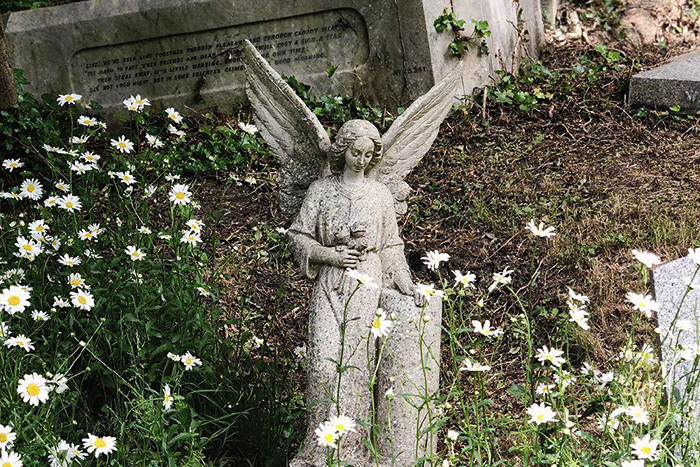
The question is a very common one, and misinformation about the origins of the three-barred Orthodox Cross abounds even in scholarly studies. This Cross is not Russian in origin, but comes from the Early Church. In its traditional form, it is a standard Cross with a bar on top, representing the mocking title given to Christ at the Crucifixion (which, in proper iconographic tradition, is replaced with the words: “The King of Glory”), and a bottom bar, on which Christs feet were affixed (twisted, according to one — and only one — tradition, by Christs suffering on the Cross, one side pointing up to Heaven and representing the Good Thief on Christs right, the other pointing down to Hades, representing the unrepentant thief at Christs left).

To dispel the notion that the three-barred Cross in question was unknown in the Early Church, we picture, above, the Cross of St. Constantine, a treasure of the Monastery of Vatopedi on Mt. Athos, where it is found on the Holy Table of the monastery Katholikon. According to tradition, Vatopedi was originally built by St. Constantine the Great (334-337) and rebuilt by the Emperor Theodosius the Great (379-395), following its destruction by Julian the Apostate (361-363). This precious Cross, said by many to be that of the monasterys original founder, is also at the center of one of the better known miracles in the history of the community.

Wishing to save both the Cross of St. Constantine and a famous Icon of the Mother of God (The Theotokos Vimatarissa or Ktitorissa) from Arab invaders, during an attack on the monastery in the tenth century, a certain Hierodeacon Sabbas, the Brotherhoods sacristan (Vimataris; hence, one of the names given to the Icon in question), hid them in a well and placed a lighted candle in front of them. Father Sabbas, however, was subsequently captured and taken as a prisoner to Crete. Seventy years later, when he won his freedom and returned to the monastery, the old monk informed the younger monks of his actions and instructed them to open the well where he had hidden the Icon and Cross. When they did this, they found standing upright, the candle which Father Sabbas had placed before them still burning.
From Orthodox Tradition, Vol. XIV, No. 4, pp. 25-26.





"Wishing to save both the Cross of St. Constantine and a famous Icon of the Mother of God (The Theotokos Vimatarissa or Ktitorissa) from Arab invaders…"
Wouldn't it be better and more accurate to rephrase this to say "…from Muslim invaders…"
You are assuming they were Muslims…..how do you know they were?
History, my dear, which is well preserved in Greece
By this time Arabs had long converted to Islam. Muslim Arab raiders also sacked the Vatican in the ninth century, looting the relics of St. Peter and St. Paul. The Pope fled behind the Aurelian walls. His successor Leo built the first Vatican walls to protect the site vs Muslim raids. So, yes, the raiders at Vatopedi were Muslims. See Professor Dario Fernandez-Morera’s academia.edu page at https://northwestern.academia.edu/dariofernandezmorera